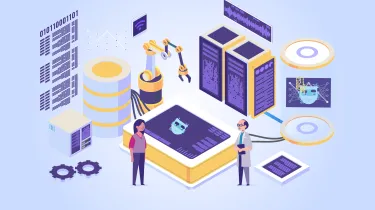Einführung in das Maschinelle Lernen Teil 1: Grundlagen
Der erste Teil des Kurses Einführung in Maschinelles Lernen

📊︎
Fortgeschrittene
⏱
40 Stunden
🏅︎
Leistungsnachweis
🎁︎
Kostenlos
★
4.67 (3)
©
CC BY-SA 4.0
🌐︎
Englisch
Dieser Kurs gehört zu der Kursreihe
Einführung in das Maschinelle Lernen
Übersicht
Maschinelles Lernen (ML) steht im Zentrum vieler Anwendungen der künstlichen Intelligenz. Ein zentrales Ziel dieser Kursreihe ist es, die grundlegenden Bausteine des überwachten maschinellen Lernens zu vermitteln. In diesem ersten Teil machen wir Sie mit den absoluten Grundlagen des überwachten maschinellen Lernens vertraut und behandeln Konzepte wie Regression, Klassifikation, empirische Risikominimierung und Lernende.
Welche Themen werden behandelt?
- Einführung in grundlegende Konzepte des überwachten maschinellen Lernens wie Daten, Aufgabe, Modell, Hypothesenraum, Lernverfahren, empirische Risikominimierung
- Lineare und polynomielle Regressionsmodelle, L1- und L2-Verlust
- Klassifikationsmodelle wie logistische Regression, Diskriminanzanalyse und Naive Bayes
Was werde ich erreichen?
- Erklären Sie die Bausteine des überwachten maschinellen Lernens
- Erklären Sie die Bedeutung der empirischen Risikominimierung für das überwachte maschinelle Lernen
- Wenden Sie lineare und polynomiale Regressionsmodelle in R bzw. Python auf tabellarische Daten an
- Wenden Sie Klassifikationsmodelle wie logistische Regression, Diskriminanzanalyse und Naive Bayes in R bzw. Python auf tabellarische Daten an
Welche Voraussetzungen muss ich erfüllen?
Dieser Kurs steht allen Interessierten offen. Wir empfehlen jedoch, dass die Lernenden folgende Voraussetzungen mitbringen:
- Eine solide Grundlage in Mathematik, z.B. 8 Jahre Mathematikunterricht an weiterführenden Schulen
- Vorkenntnisse in Linearer Algebra und Analysis erforderlich (mindestens auf Gymnasialniveau)
- Vorkenntnisse in Statistik und Wahrscheinlichkeit sind empfohlen (mindestens auf Gymnasialniveau)
- Grundlegende Programmierkenntnisse in R oder Python (z.B. durch einen kleinen Selbstlernkurs)











